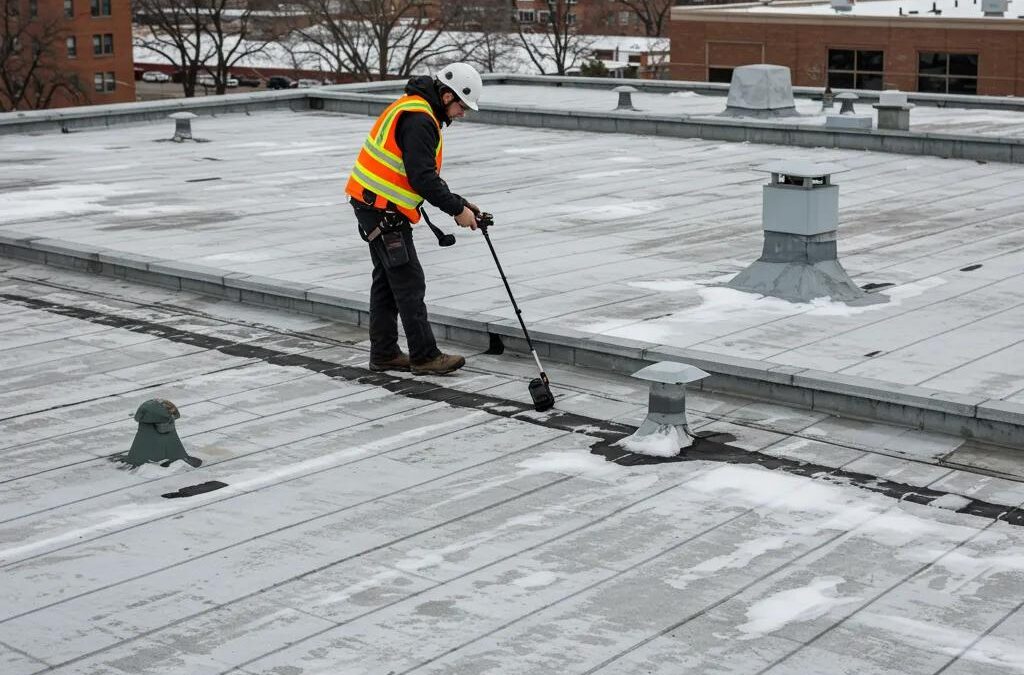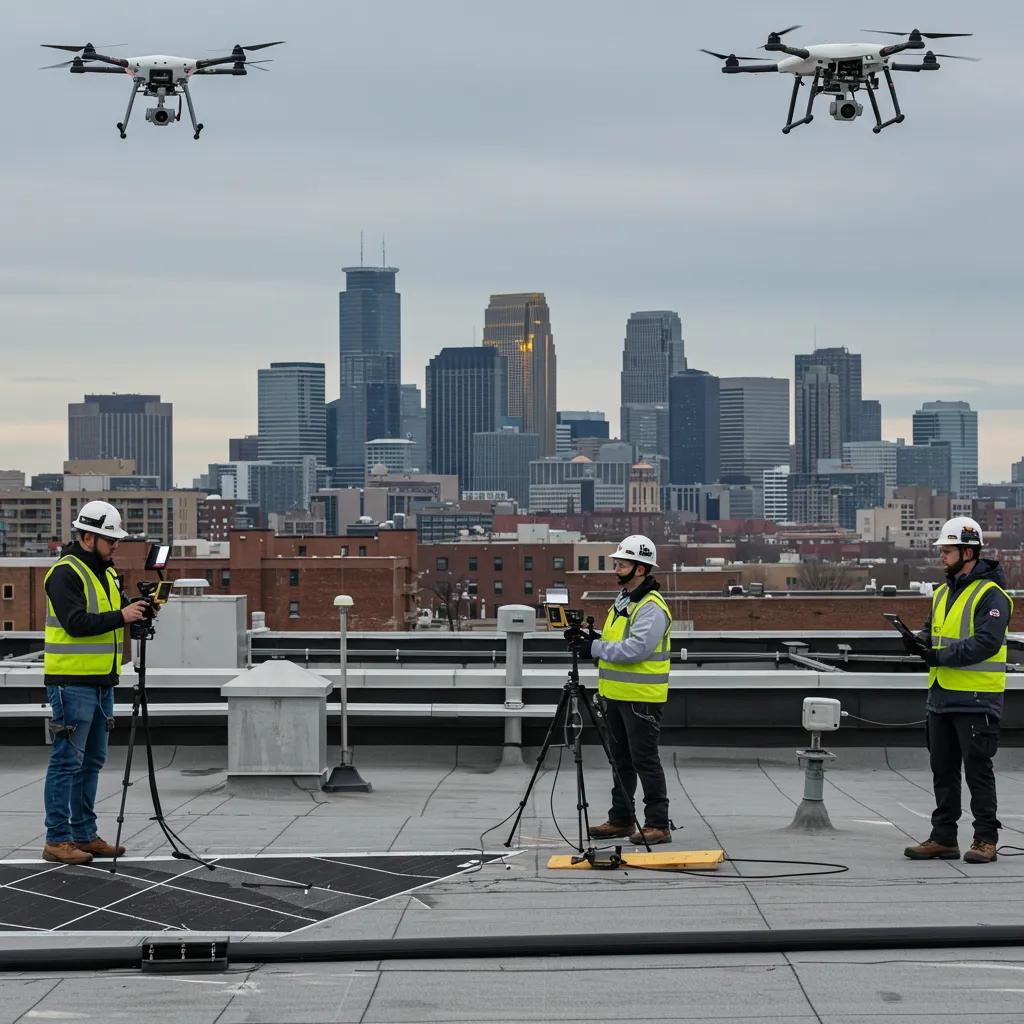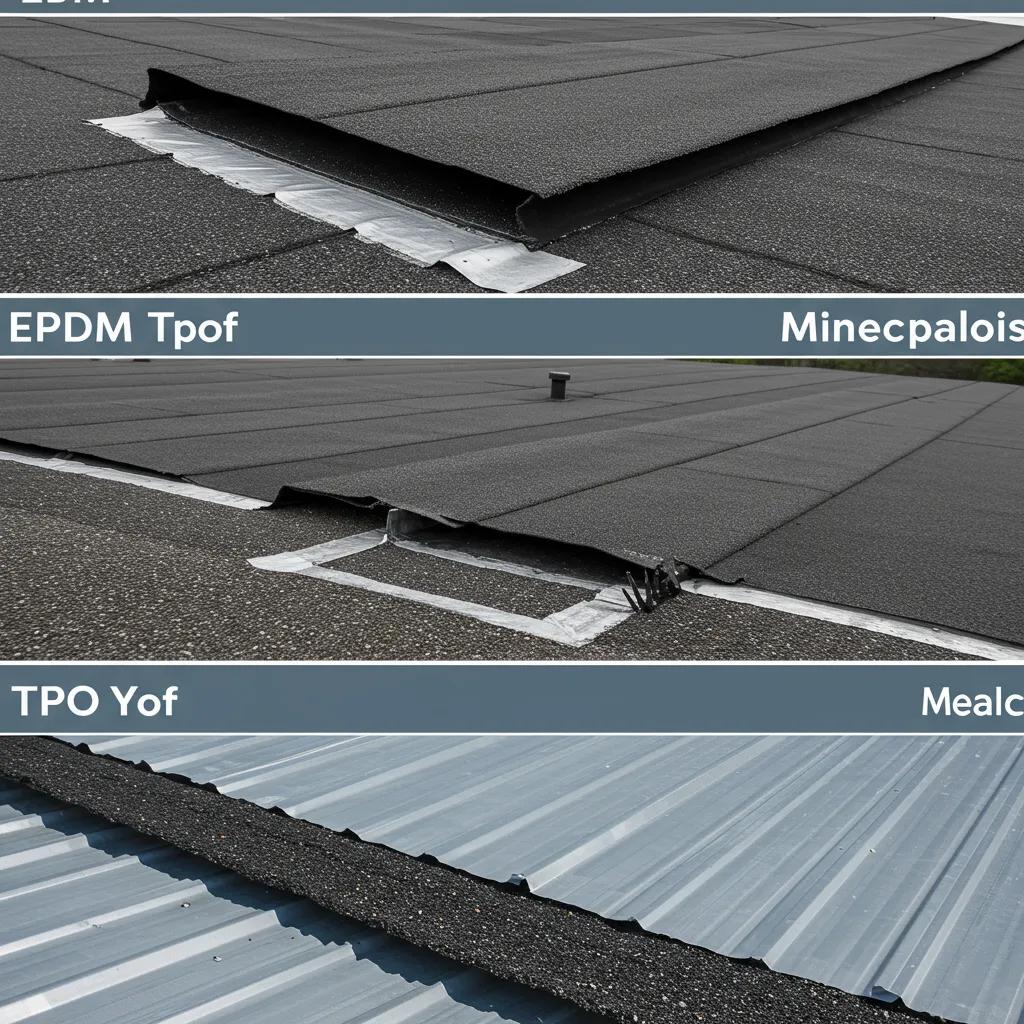Minneapolis Commercial Roof Inspections – Schedule Your Expert Roof Assessment Today
Why Are Regular Commercial Roof Inspections Essential for Minneapolis Businesses?
How Do Inspections Protect Your Commercial Roof Investment?
What Common Roof Problems Do Inspections Detect in Minneapolis?
How Do Inspections Ensure Compliance with Local Codes and Warranty Requirements?
What Is Included in a Comprehensive Minneapolis Commercial Roof Inspection?
What Are the Steps in Our Commercial Roof Inspection Process?
- The inspection process follows structured phases: Pre-inspection planning and documentation review. On-site visual and targeted testing, including safety checks. Technology-assisted imaging and data collection. Report preparation, prioritization, and recommended next steps.
How Do Advanced Technologies Like Drones and Infrared Cameras Improve Inspections?
Infrared Thermography for Moisture Detection in Commercial Roofs
Infrared Thermography (IRT) is employed to map moisture distribution and localize areas with anomalous water content. This paper presents two distinct approaches utilizing IR thermography as a tool for mapping surface evaporation flux, with the objective of determining the technique’s limitations. The initial section details laboratory measurements designed to evaluate the evaporation rate relative to the moisture content of various porous materials and the diffusion of water within walls. Using evaporation flux data acquired in the laboratory on samples, it is possible to comprehend the behavior of water within meso- and micro-pores, thereby establishing an empirical relationship between evaporation flux and the cooling effect recorded by thermography under specific conditions. Based on the typical trend of evaporation flux rates, a method can be inferred for interpreting passive thermographic surveys to identify areas at higher risk of surface degradation.
Infrared thermography for moisture detection: a laboratory study and on the field test, N Ludwig, 2011
What Information Is Provided in a Detailed Roof Inspection Report?
| Report Component | What It Shows | Recommended Action |
|---|---|---|
| Annotated Photos | Visual evidence of defects and locations | Schedule repairs by priority and retain for warranty support |
| Thermal/IR Readings | Subsurface moisture and insulation issues | Conduct targeted moisture verification and scope repairs |
| Drainage & Ponding Notes | Areas of water accumulation and flow issues | Clear drains, correct slopes, or install additional scuppers |
| Priority Matrix | Risk level (urgent, recommended, monitor) | Allocate budget for urgent items; schedule monitoring for low-risk issues |
| Cost Estimate Summary | Rough order-of-magnitude pricing for recommendations | Use for planning, financing, or bidding next-step work |
Which Types of Commercial Roofs Do We Inspect in Minneapolis?
| Roof Type | Common Issues in Minneapolis | Inspection Focus / Typical Remediation |
|---|---|---|
| EPDM (single-ply) | Seam failure, punctures, adhesive breakdown | Inspect seams, flashings; patch or re-seam localized areas |
| TPO / PVC (single-ply) | Heat-weld failures, thermal movement stress | Check weld integrity, membrane tension; recommend repairs or reinforcement |
| Built-up / Modified Bitumen (asphalt) | Blistering, asphalt wear, ponding | Assess surfacing and substrate; address drainage and localized repairs |
| Metal Roofs | Fastener corrosion, panel deformation, seal failures | Inspect fasteners, seam seals; replace panels or re-secure connections |
What Are the Key Features of Flat Roof Inspections?
How Are Sloped Roofs Inspected?
What Special Considerations Are There for Industrial Roof Inspections?
When Should Minneapolis Commercial Roof Inspections Be Scheduled?
How Often Should Commercial Roofs Be Inspected in Minneapolis?
Why Are Post-Storm Roof Inspections Critical?
What Are the Benefits of Pre- and Post-Winter Roof Assessments?
How Much Does a Minneapolis Commercial Roof Inspection Cost?
| Cost Factor | Why It Matters | Estimated Price Impact |
|---|---|---|
| Square Footage | Larger roofs require more time and imagery | Low to High (proportional to size) |
| Roof Complexity | Multiple levels, penetrations, and equipment increase inspection time | Moderate to High |
| Accessibility | Difficult access or safety measures add labor and equipment costs | Moderate |
| IR/Thermal Scanning | Requires specialized equipment and dry conditions for accuracy | Moderate to High |
| Drone Mapping | Adds high-resolution imagery and mapping capabilities | Low to Moderate |
What Factors Influence Commercial Roof Inspection Pricing in Minneapolis?
How Does Inspection Cost Translate to Long-Term Repair and Maintenance Savings?
Are There Financing or Maintenance Plans Available for Commercial Roof Inspections?
What Commercial Roofing Services Are Available After Your Minneapolis Roof Inspection?
- Post-inspection services typically include: Emergency leak repairs and temporary patches for urgent conditions. Targeted restoration and seam repairs to extend service life. Full-system replacement planning and budgeting when deterioration is widespread.
When Is Commercial Roof Repair Recommended Following an Inspection?
How Does Commercial Roof Replacement Differ from Repair?
What Are the Benefits of Regular Commercial Roof Maintenance Plans in Minneapolis?
How to Choose the Right Commercial Roofing Contractor in Minneapolis?
- Contractor selection checklist: Verify license and insurance coverage.Request sample inspection reports and deliverables.Confirm experience with your roof type and local weather impacts.Ensure use of modern inspection tools (drones, IR) and documented safety practices.



